 It’s safe to say that 2020 has been one a heck of a year (and it’s barely half over!)—the good, the bad, the ugly. At times, it’s felt as if an entire decade has passed. No matter how you slice it, the fact that we’ve experienced something as novel as a global pandemic still feels weird to say, think about, and sometimes fully appreciate. It has been a tumultuous time outside of COVID-19 as well, and every person has had a unique experience, a unique perception, and unique challenges along the way.
It’s safe to say that 2020 has been one a heck of a year (and it’s barely half over!)—the good, the bad, the ugly. At times, it’s felt as if an entire decade has passed. No matter how you slice it, the fact that we’ve experienced something as novel as a global pandemic still feels weird to say, think about, and sometimes fully appreciate. It has been a tumultuous time outside of COVID-19 as well, and every person has had a unique experience, a unique perception, and unique challenges along the way.
We’ve all probably learned a thing or two about ourselves. We’ve had time to reevaluate what is important to us, and maybe find a few things that aren’t. Here are just a few things I’ve left quarantine with, in no particular order:
My Quarantine Takeaways
- I needed to uncouple productivity from self-worth. In working from home, I found that I accomplished most tasks in spurts. I’d work for 2 hours straight, then go for a walk, then jot down ideas for projects for 30 minutes, then get in a lift, then eat while watching a show, and on and on. Other days I just wouldn’t have it—no juice, no gas in the tank. Responding to emails felt like a win. And then the eventual guilt would sink in. Why didn’t I do more? How is this all that I got done today, this week? After a few weeks of this cycle, I finally told myself, “STOP.” It’s okay that there are things left on your to-do list. Its okay that you’re not motivated every second of every day. What we lived through, and are still living through, is something that we have literally never seen or experienced (at least I haven’t!). So give yourself some slack, be a little more forgiving, and start each day fresh.
- My “best days” involved some semblance of structure. Don’t get me wrong, I love a little bit of spontaneity. But for much of quarantine, I found that my good days involved a level of consistency. When I woke up gradually with coffee and water, got a little bit of work done first thing, cleaned up the bedroom/loft, got in a workout, completed any errands like grocery shopping, blocked off time for reading, and got outside for some vitamin D, I felt energized. I felt accomplished. Obviously, there were variations. But blocking off time, working through chores and work intermittently, taking time for myself with activity and self-care—more often than not these days fell into the “good” category. On days where I had no schedule, stayed up too late and slept in too long, binged a TV show, or had little activity, I felt like garbage by the end. I can still hear my high school statistics teacher saying, “correlation does not imply causation,” but at least my chances for a good day skyrocketed with a little routine.
- The importance of “idle time.” Full disclosure: I’m not sure that working from home always meshed with my personality or temperament. I would check my email every five seconds, even though I just cleared my queue seconds before. I would write down three sentences, hear the ping of a new email dropping into my inbox, and lose my complete train of thought. I would sometimes go for a walk and feel myself getting tempted to check in. Like many of us, I’m already addicted to my phone, feeling incomplete if I leave a room without it (unhealthy, I know; I’m working on it). But I found that literally scheduling in time to do nothing did wonders for my focus. I wasn’t scatterbrained when I returned to writing or working on a project. In fact, just sitting doing nothing, or having a casual conversation with my housemates, seemed to just calm my nerves and anxious thoughts in general. Just 5-minutes of unplugged silence was powerfully calming as well. Moral of the story? Sometimes doing nothing is more productive than trying to do 42 things at once.
- The power of connection. I’m sure by this point, most of us have come to a conclusion similar to this, so I’ll keep it brief. You don’t need to be in close proximity to be close to those you love and appreciate. Some of my simplest joys came from FaceTimeing with family or having a quick phone call with a friend. It’s a quick recharge for the mental and emotional batteries.
- It feels great to make your bed first thing. It’s simple. It’s quick. It sets your day in motion on the right foot. And at the very least, you have a tidy place to come home to when you’re ready to hit the sack for the night. It just feels good.
- My mood is correlated to the amount of news and social media I consume. See #3 from above, and you’ll get the idea. A little news is okay. Knowing what is going on in the world around us is crucial in my mind. But the constant onslaught of “breaking news” hour after hour, minute to minute, is completely exhausting. When I limited my consumption to short periods, one stint in the morning (after coffee of course) and one in the evening, I found that my day’s trajectory was a lot more positive overall.
- Whether good or bad, this too shall pass. No matter how large my to-do list was, no matter how much uncertainty and worry crept into my thoughts, and no matter how cathartic a workout I had, every day came to an end eventually. Sometimes I found myself muttering “this too shall pass” under my breath when I would be feeling a particular amount of anxiety or stress. And you know what? It actually did help put things in perspective. Take the good with the bad, because it’ll all be over eventually one way or another.
- It's okay if you binged that show or played that video game. Hey, we’re all human. Don’t beat yourself up for indulging a little bit here and there! (Refer to #1 as well!)
- Take advantage of the sunny days. Growing up in Michigan, the second most cloudy state in the US (for real!), I had a bit of a head start on this lesson. But the pandemic sure as heck hammered it home. When it was a beautiful, sunny day, I made sure to get outside for some amount of time, even if it was only 20 minutes on the back deck in between meetings. It boosted my mood, calmed me down, and made me take a second to just have a little gratitude for the simple things.
- There is a feeling of zen I have when lifting. I know: this is an obvious one coming from a coach. But that’s also why I left it until the other insights had their time to shine. Everyone has their own interests, their own ways to unwind, and for me that is under a barbell or with a couple of dumbbells in hand. My brain shuts off, the music blares, and I can just get lost in it. If you haven’t found something, some activity that brings you a sense of calm, I highly encourage you to start exploring! Hobbies and interests shouldn’t be left by the wayside just because they’re not your main hustle.
Lessons We Will Take with Us
I’m sure that everyone will leave quarantine changed in some way, shape, or form. And the lessons you’ll leave with will be completely unique to your experience. Whether positive or negative, try to carry these into your life post-pandemic. Because more often than not, they’ll help you in the long run moving forward.
This blog was written by Lauren Zakrajsek, NIFS Health Fitness Instructor, Personal Trainer, and Internship Coordinator. To learn more about the NIFS bloggers, click here.


 The glorious return to summer is upon us, and if you are like me, you will be spending as much time as possible soaking up sunshine as you take your leisure outdoors, take up hobbies in the yard and garden, and engage in group fitness bootcamp classes in the park. The sunshine feels good and has many benefits, including mood enhancement, vitamin D production, and even treatment for a number of skin conditions such as psoriasis and acne. There are, however, some dangers associated with extended sun exposure that can be limited with the use of sunscreen, most notably skin cancer.
The glorious return to summer is upon us, and if you are like me, you will be spending as much time as possible soaking up sunshine as you take your leisure outdoors, take up hobbies in the yard and garden, and engage in group fitness bootcamp classes in the park. The sunshine feels good and has many benefits, including mood enhancement, vitamin D production, and even treatment for a number of skin conditions such as psoriasis and acne. There are, however, some dangers associated with extended sun exposure that can be limited with the use of sunscreen, most notably skin cancer.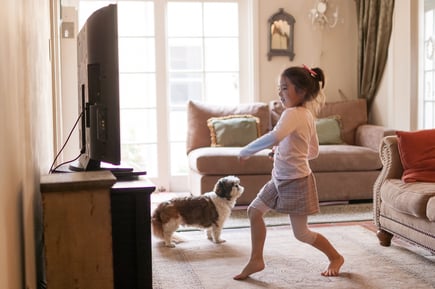 We all know that physical fitness and wellness are prerequisites for a productive and healthy life. Exercise is good not only for the body, but for the mind as well. We want to ensure a future full of great experiences. For one population, our children, participating in physical activity may be becoming more and more challenging, whether it be from lack of interest, lack of support, or lack of funding for programs in their community. One area in which this population excels, however, is technology. Without a doubt, smartphone technology is a part of our current culture and most likely will be for a long time. For some older people, this might be a newer concept. At the moment, though, ensuring the future of physical fitness for the next generation will need to coexist with technology.
We all know that physical fitness and wellness are prerequisites for a productive and healthy life. Exercise is good not only for the body, but for the mind as well. We want to ensure a future full of great experiences. For one population, our children, participating in physical activity may be becoming more and more challenging, whether it be from lack of interest, lack of support, or lack of funding for programs in their community. One area in which this population excels, however, is technology. Without a doubt, smartphone technology is a part of our current culture and most likely will be for a long time. For some older people, this might be a newer concept. At the moment, though, ensuring the future of physical fitness for the next generation will need to coexist with technology. 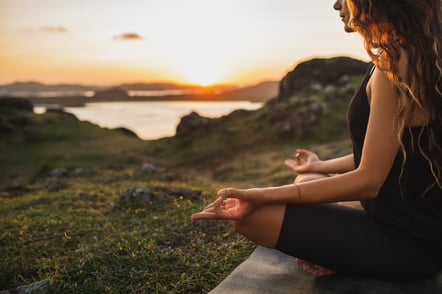 There seems to be an expectation that women are supposed to do it all and not complain. That women are supposed to be wives and mothers, work full time, juggle friendships, have a social life, have time for themselves, so on. Society is ever changing, and we are supposed to keep up with it. Let’s rewind some years ago where most women stayed at home with their children, and taking care of their household was their only responsibility.
There seems to be an expectation that women are supposed to do it all and not complain. That women are supposed to be wives and mothers, work full time, juggle friendships, have a social life, have time for themselves, so on. Society is ever changing, and we are supposed to keep up with it. Let’s rewind some years ago where most women stayed at home with their children, and taking care of their household was their only responsibility. 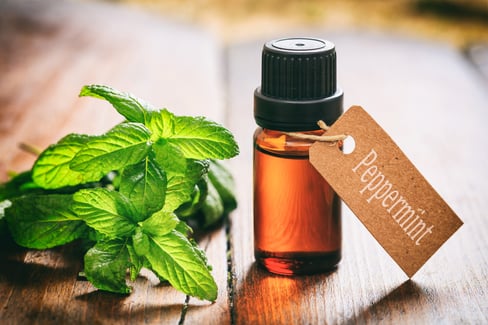 Peppermint oil is a commonly used nutrition
Peppermint oil is a commonly used nutrition 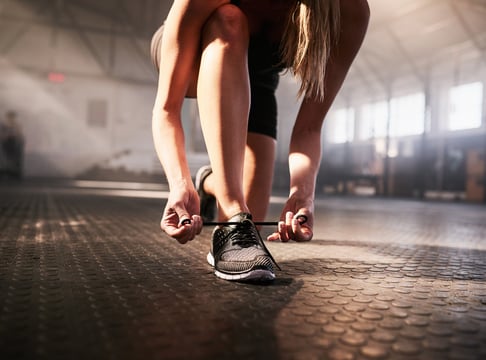 Do you remember the last time you went on an extended vacation, came back home, jumped into the gym and your favorite class and thought you could pick right back up where you left off? You might remember feeling like you were not going to make it through the class and were so sore for days on end. And that was just after a vacation consisting of a long rest, relaxation, and food freedom. Just think what you may encounter once you return to your favorite class or training group after two to three months of quarantine.
Do you remember the last time you went on an extended vacation, came back home, jumped into the gym and your favorite class and thought you could pick right back up where you left off? You might remember feeling like you were not going to make it through the class and were so sore for days on end. And that was just after a vacation consisting of a long rest, relaxation, and food freedom. Just think what you may encounter once you return to your favorite class or training group after two to three months of quarantine. 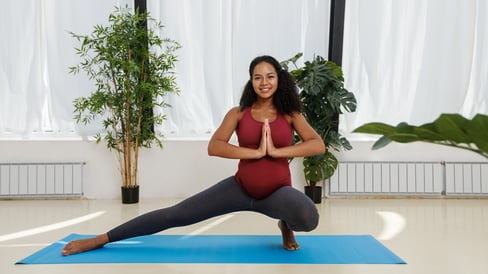 Today, the realities of the human body immediately after giving birth are less mysterious than ever, a development some attribute to a changing climate around motherhood. In the past women felt like they couldn’t talk about the after-effects of having a baby, let alone caring for other children at the same time.
Today, the realities of the human body immediately after giving birth are less mysterious than ever, a development some attribute to a changing climate around motherhood. In the past women felt like they couldn’t talk about the after-effects of having a baby, let alone caring for other children at the same time. 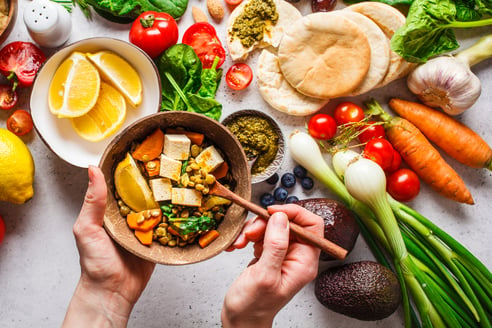 A few years ago, I made it my New Year’s Resolution to completely cut out animal products from my diet. I had played around with a couple variations of diets for a few years in college while competing in a Division 1 rowing program—cutting out all red meat, processed meats, and chicken, and only eating fish. Essentially the only things left were the eggs, milk, and cheese. I had been hesitant because cheese was my absolute favorite thing to add to every meal. I dreamed about doing a cheese and wine tour of Europe one day—I was really in love with cheese.
A few years ago, I made it my New Year’s Resolution to completely cut out animal products from my diet. I had played around with a couple variations of diets for a few years in college while competing in a Division 1 rowing program—cutting out all red meat, processed meats, and chicken, and only eating fish. Essentially the only things left were the eggs, milk, and cheese. I had been hesitant because cheese was my absolute favorite thing to add to every meal. I dreamed about doing a cheese and wine tour of Europe one day—I was really in love with cheese.